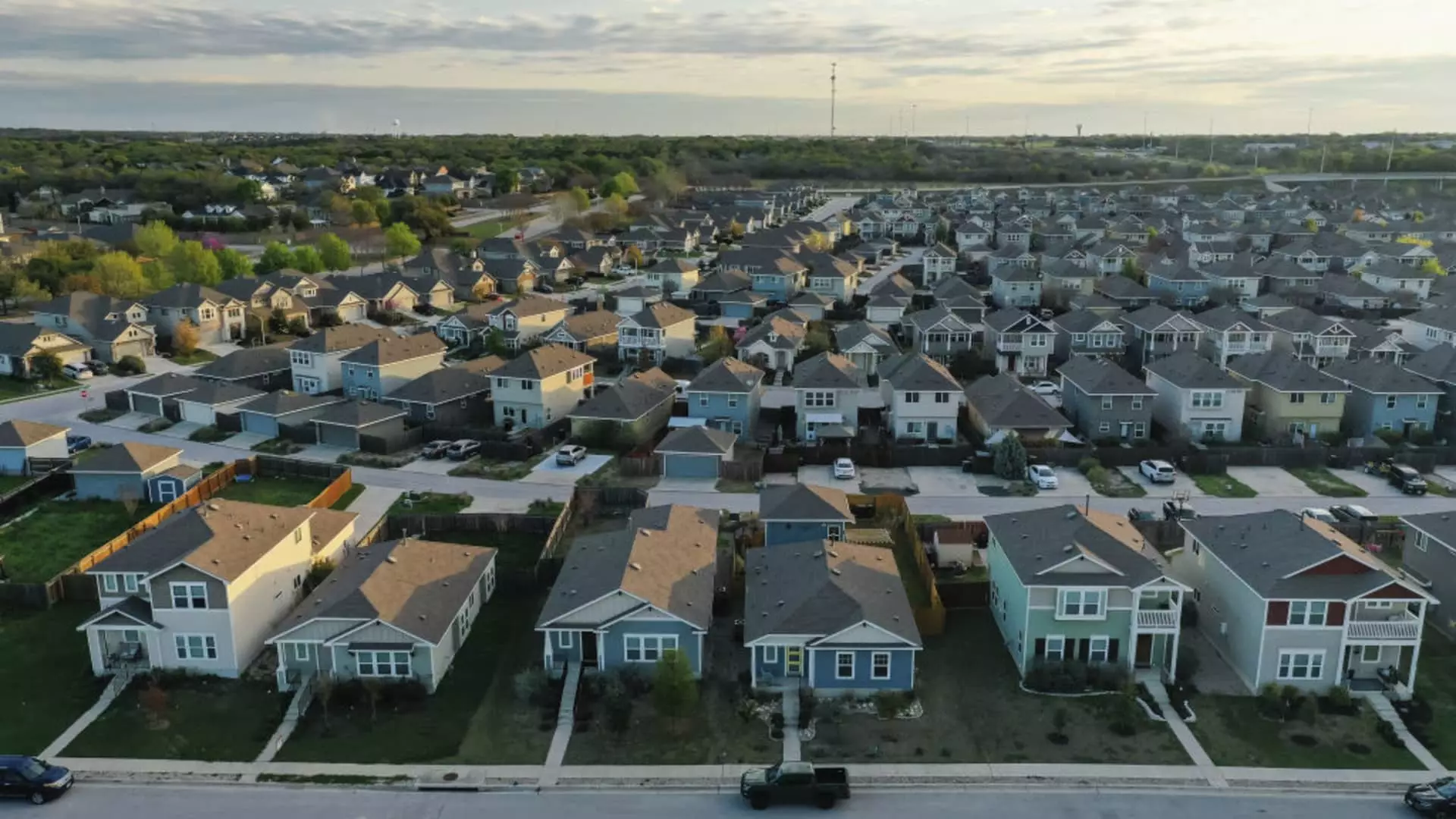As the spring housing market approaches, many potential homebuyers seem to be unmotivated to act despite a rise in available listings. While the number of homes on the market is increasing, the interplay of stagnant mortgage rates and climbing home prices is dissuading buyers from making timely investments. According to the Mortgage Bankers Association, mortgage applications for home purchases fell by 4% in the past week, juxtaposed against a year-over-year flat demand. This stagnation highlights a disconnect between listing availability and buyer action, raising questions about the health of the housing market.
Mortgage rates, which have remained largely unchanged, play a critical role in shaping buyer behavior. The average interest rate for a 30-year fixed-rate mortgage slightly decreased to 6.97%, though this drop barely moves the needle given recent trends. Many potential buyers are caught in a dilemma where current rates do not incentivize them to engage with the market actively. Joel Kan of the MBA points out that as loan sizes have crept up—now averaging around $447,300—prospective buyers face challenges in securing affordable financing. This situation is compounded by the fact that many borrowers currently hold mortgages at lower rates than what is now available, making the idea of refinancing or purchasing less appealing.
The current home sales environment is unsettling, with transactions spiraling down to levels not seen in nearly three decades. Nationally, home prices are reaching new heights, and market competitiveness among sellers, though slightly declining, means that many are reluctant to significantly reduce their asking prices. In January, 15.6% of sellers made price cuts, a slight increase from last year’s 14.7%. However, sellers remain hopeful, as competition for desirable homes often allows them to hold onto their list prices.
Adding to the complexity, the supply of homes for sale has risen by 25% compared to a year ago, largely due to homes lingering on the market longer. Data from Redfin indicates that the average time to sell a home in January was 54 days—the highest figure since March 2020. This extended selling period suggests that while inventory may be increasing, the demand is not sufficiently keeping pace, making the market feel less dynamic and, in turn, less urgent for potential buyers.
Ultimately, the spring housing market presents a conundrum for homebuyers. A mix of static mortgage rates, relentless price increases, and prolonged selling timelines creates a landscape where action might feel daunting. With home sales hovering near historical lows and buyer applications suffering, the market’s vitality is in question. As we move forward into the warmer months, both buyers and sellers must adapt to the prevailing trends—recognizing opportunities and challenges in equal measure as they navigate this increasingly complicated housing environment.


Leave a Reply